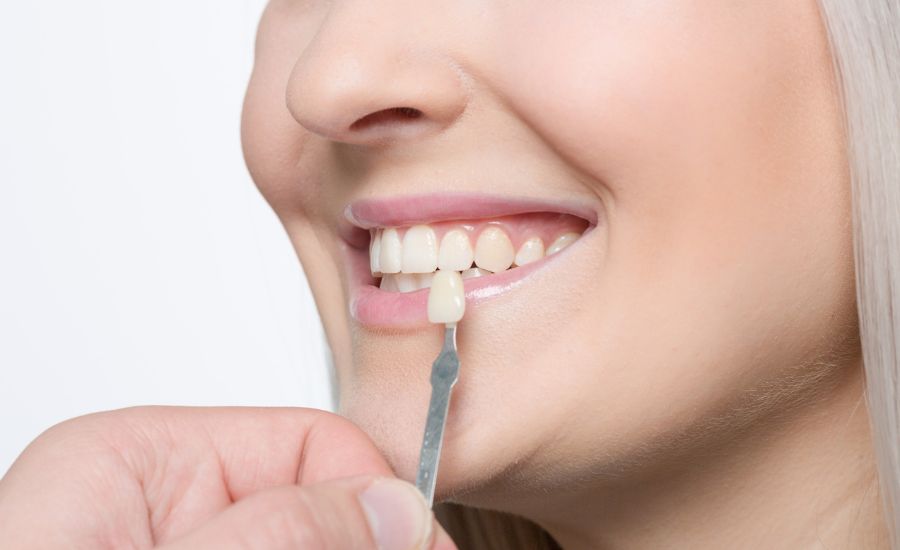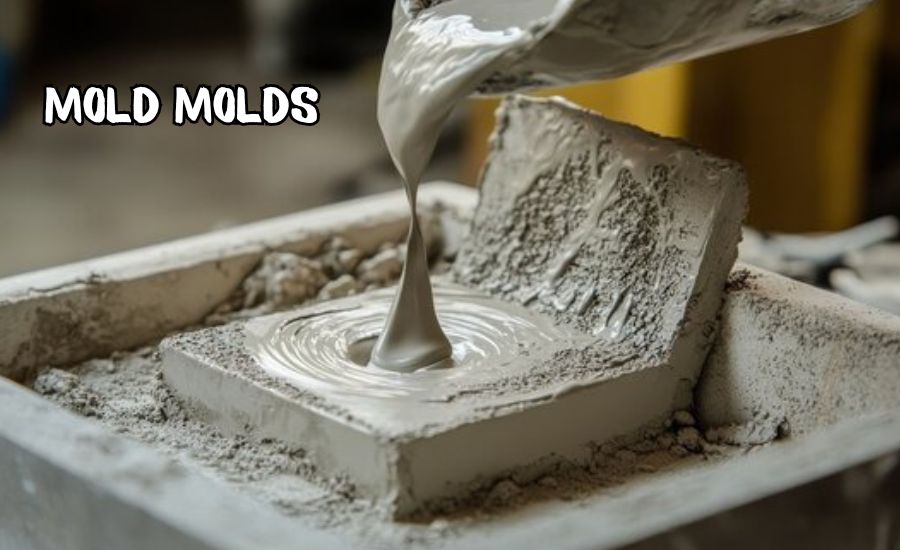4 Quick Fixes for Veneer Staining
Despite their stain-resistant properties, veneers can sometimes develop discolouration, particularly around the edges where they meet natural teeth or due to lifestyle factors. For residents of London seeking to maintain their investment in a flawless smile, addressing veneer staining promptly is essential. This article explores four practical and effective methods to tackle veneer staining, ensuring your smile remains bright and confident. These fixes are designed to be accessible, drawing on professional dental advice and at-home care practices suitable for a busy urban lifestyle.
For insight, Dr. Sahil Patel of MaryleboneSmileClinic shares his perspective: “Maintaining the brilliance of porcelain veneers requires consistent care, much like natural teeth. Regular brushing with non-abrasive toothpaste and avoiding excessive consumption of staining substances like coffee or red wine can significantly prolong their pristine appearance. For tailored advice on veneer maintenance, visit this site to explore our comprehensive cosmetic dentistry services.” This guidance underscores the importance of proactive care to prevent and address staining effectively.
Veneer Staining: Causes and Considerations
Porcelain veneers are crafted from non-porous materials, making them highly resistant to surface stains compared to natural teeth. Unlike tooth enamel, which has microscopic pores that can trap pigments, porcelain’s smooth, glossy surface repels most staining agents. However, staining can occur in specific circumstances, particularly at the margins where the veneer bonds to the natural tooth. These areas may accumulate plaque or tartar if oral hygiene is neglected, creating a rough surface that attracts discolouration. Additionally, the bonding cement used to secure veneers can degrade over time, especially if exposed to acidic foods or drinks, leading to visible staining along the edges.
External factors such as diet and habits also play a significant role. Common culprits include coffee, tea, red wine, and dark-coloured foods like berries or tomato-based sauces, which can leave pigments on natural teeth and, to a lesser extent, veneer margins. Smoking is another major contributor, as nicotine and tar can yellow both natural teeth and the bonding material around veneers. Furthermore, poor oral hygiene practices, such as irregular brushing or inadequate flossing, can exacerbate staining by allowing plaque buildup. Over time, normal wear may also reduce the protective glaze on veneers, making them slightly more susceptible to discolouration, though this typically occurs after many years.
Understanding these causes is crucial for Londoners, who often lead fast-paced lives that may include frequent consumption of staining beverages or limited time for meticulous oral care. By recognising the factors that contribute to veneer staining, individuals can adopt targeted strategies to maintain their smile’s brilliance while navigating the demands of city living.
Fix 1: Optimise Your Oral Hygiene Routine
The foundation of preventing and addressing veneer staining lies in a robust oral hygiene routine. Regular brushing and flossing are non-negotiable for keeping both veneers and natural teeth free from plaque and surface stains. Use a soft-bristled toothbrush to avoid scratching the veneer surface, which could create micro-abrasions that trap pigments. Non-abrasive, fluoride-containing toothpaste is recommended, as it strengthens the underlying tooth enamel without damaging the porcelain. Brushing for two minutes twice daily, focusing on the gumline and veneer margins, helps remove food particles and plaque that could lead to discolouration.
Flossing is equally important, as it clears debris from between teeth where veneers meet natural enamel, a common site for staining. Waxed floss or floss picks can make this process easier, particularly for those with tightly spaced teeth. Incorporating a fluoride mouthwash can further reduce bacteria and reinforce enamel, supporting the overall health of the teeth beneath the veneers. For London residents, consulting a cosmetic dentist London-based, such as those in practices near Harley Street, can provide personalised advice on selecting the right dental products. Regular dental check-ups, ideally every six months, allow professionals to polish veneers and remove any early signs of staining, ensuring they remain glossy and bright.
Consistency is key. Even minor lapses in oral hygiene can lead to plaque buildup, which not only affects aesthetics but also risks decay in the underlying teeth. By dedicating a few minutes each day to thorough cleaning, individuals can significantly reduce the likelihood of veneer staining and maintain a polished smile that reflects well in both personal and professional settings.
Fix 2: Modify Your Diet to Minimise Staining
Dietary choices directly impact the longevity and appearance of porcelain veneers. While the porcelain itself is highly resistant to staining, the surrounding natural teeth and bonding materials are more vulnerable. Limiting consumption of stain-causing foods and drinks is a practical step for those seeking to preserve their smile’s vibrancy. Coffee, tea, red wine, and cola are notorious for leaving pigments that can accumulate over time, particularly at the veneer-tooth interface. Similarly, foods like berries, curries, and tomato sauces contain intense pigments that may affect natural teeth, creating a contrast that makes veneers appear less uniform.
To mitigate this, rinse your mouth with water immediately after consuming staining substances. This simple action dilutes pigments and prevents them from settling. Using a straw for beverages like coffee or cola can also reduce contact with teeth, minimising the risk of discolouration. For those who cannot avoid these items entirely—common in London’s vibrant café and dining culture—brushing soon after consumption can further limit staining. However, wait at least 30 minutes after consuming acidic foods or drinks, such as citrus fruits or sodas, to avoid brushing softened enamel, which could lead to erosion.
Incorporating teeth-friendly foods can also help. Crunchy vegetables like carrots and celery act as natural abrasives, scrubbing away surface stains while stimulating saliva production, which neutralises acids and cleanses the mouth. Dairy products, such as cheese, can increase saliva flow and provide calcium to strengthen underlying teeth. By making mindful dietary adjustments, individuals can protect their veneers from staining while enjoying London’s diverse culinary scene.
Fix 3: Address Lifestyle Habits Like Smoking
Smoking is a leading cause of dental discolouration, affecting both natural teeth and the appearance of veneers. Nicotine and tar in tobacco products can yellow the bonding material around veneers and stain adjacent teeth, creating an uneven smile. For Londoners, where social settings may involve smoking or vaping, quitting these habits is one of the most effective ways to prevent veneer staining. The chemicals in cigarettes not only discolour dental work but also contribute to gum disease, which can compromise the stability of veneers over time.
Quitting smoking offers immediate benefits for oral health and veneer maintenance. Within weeks, the risk of new stains decreases, and the overall brightness of the smile improves. Support is widely available in London, from NHS smoking cessation programmes to private clinics offering counselling and nicotine replacement therapies. For those transitioning away from smoking, avoiding other staining substances, such as dark beverages, during this period can further protect veneers. A cosmetic dentist London-based can assess the impact of smoking on existing veneers and recommend professional cleaning or, in severe cases, replacement to restore a pristine appearance.
For individuals who grind their teeth—a habit often exacerbated by stress in urban environments—wearing a night guard is advisable. Bruxism can wear down the veneer’s protective glaze, making it more prone to staining. By addressing these lifestyle factors, patients can significantly extend the lifespan and aesthetics of their veneers, ensuring a confident smile in professional and social interactions.
Fix 4: Professional Cleaning and Veneer Maintenance
Even with diligent at-home care, professional intervention is essential for maintaining veneer brilliance. Regular dental visits, ideally every six months, allow a cosmetic dentist London to perform professional cleanings that remove surface stains and polish veneers to restore their shine. These appointments also enable early detection of issues, such as bonding degradation or marginal staining, which can be addressed before they worsen. For composite veneers, which are more porous and prone to staining than porcelain, professional polishing can often refresh their appearance without requiring replacement.
In cases where staining is persistent, particularly at the veneer margins, a cosmetic dentist London may reline the cement edge to eliminate discolouration. This specialised procedure, offered by clinics like those in Marylebone, requires expertise to ensure a seamless result. For severe cases, replacing older veneers with new ones may be necessary, especially if they are over a decade old or made from less durable materials. Advances in cosmetic dentistry mean that modern porcelain veneers are more resistant to staining and can last 10-15 years with proper care, making replacement a worthwhile investment for a radiant smile.
Scheduling appointments with a trusted cosmetic dentist London ensures that any staining issues are addressed promptly and effectively. These professionals can also provide tailored advice on aftercare, such as recommending specific products or techniques to complement at-home routines. For Londoners balancing busy schedules, many clinics offer flexible appointments or virtual consultations to discuss veneer maintenance, making professional care accessible and convenient.
Long-Term Strategies for Veneer Longevity
Beyond these quick fixes, adopting long-term strategies can prevent veneer staining and extend their lifespan. Maintaining a consistent oral hygiene routine is paramount, as it prevents plaque buildup that can compromise both aesthetics and dental health. Regular dental check-ups allow for ongoing monitoring of veneer condition, ensuring any wear or staining is caught early. Avoiding habits like teeth grinding or using teeth as tools (e.g., opening bottles) protects the delicate porcelain surface from damage that could make it more susceptible to stains.
Choosing high-quality porcelain veneers from a reputable cosmetic dentist London is also critical. Porcelain’s non-porous nature and durability make it the gold standard for long-lasting, stain-resistant results. During consultations, discuss veneer material options and shade selection to ensure they blend seamlessly with natural teeth, reducing the visibility of any future staining. For those considering veneers for the first time, addressing underlying dental issues, such as gum disease or decay, before treatment is essential to ensure a stable foundation for the veneers.
London’s cosmopolitan environment, with its array of dining and social opportunities, can pose challenges to veneer maintenance. However, by combining these quick fixes with proactive care, individuals can enjoy a bright, confident smile for years. Whether you’re in Marylebone, Harley Street, or elsewhere in the city, partnering with an experienced cosmetic dentist ensures your veneers remain a source of pride, enhancing both your appearance and self-assurance in a vibrant urban setting.
You Should Know: Floss





Post Comment